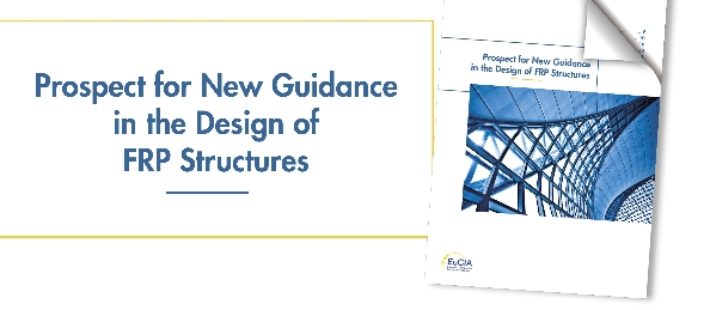A Eurocode for composites
Fibre reinforced polymer (FRP) materials offer durable, sustainable and cost-effective alternatives to traditional construction materials and this has led to their increasing use in European buildings and civil engineering structures during the past 20 years. However, to facilitate their more widespread adoption, comprehensive standards which provide designers and engineers with the confidence to build safe structures with FRP are essential.
The Eurocodes, a series of European standards written in the 1990s, provide a common approach for the design of buildings and other civil engineering works and include a number of codes relating to concrete, steel and other construction materials, but none applies specifically to FRP composites. Progress towards a new code for composites is being driven by Working Group WG4 “Fibre Reinforced Polymers” under CEN Technical Committee 250 (CEN/TC250), with expert assistance and financial support from EuCIA. The foundation for this new code is the report Prospect for New Guidance in the Design of FRP Structures, an updated version of which has recently been published.
After a period for trial use and commenting, CEN/TC250 will decide whether these technical specifications will be converted into a Eurocode for publication by the end of 2022.
The 176 page document “Prospect for New Guidance in the Design of FRP Structures” is available to download from the EuCIA website.
“The experience gained so far through the realisation of FRP structures worldwide, as well as the theoretical and experimental understanding achieved in this field, now makes it possible to develop a single set of guidelines for the EC countries,” says Professor Luigi Ascione, leader of Working Group WG4. “These guidelines compile a proposed body of rules to be applied to the design and execution of FRP structures.”
Advancing the Eco Calculator
Life cycle assessments (LCAs) are becoming an ever more important part of the materials selection process and EuCIA’s Eco Impact Calculator is a free online resource enabling composites manufacturers to calculate the environmental impact associated with the production of their products from ‘cradle to gate.’ The Eco Report generated can be used as input for further life cycle calculations.
The Eco Calculator incorporates a set of materials and processes based on data EuCIA has collected over the past three years. This database is continually reviewed, updated and expanded to extend the tool’s scope and application. Recent data additions include glass fibre mat and carbon fibre is scheduled to be added by the end of the year. To ensure the most accurate information for forthcoming updates, EuCIA is currently seeking industry input for a number of materials and processes, including epoxy curing agents, flame retardants, prepreg, autoclaving and filament winding. Companies wishing to contribute to the development of the tool are invited to contact EuCIA.
The Eco Calculator is available free of charge at ecocalculator.eucia.eu











